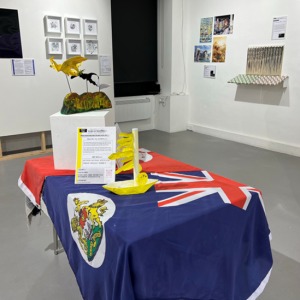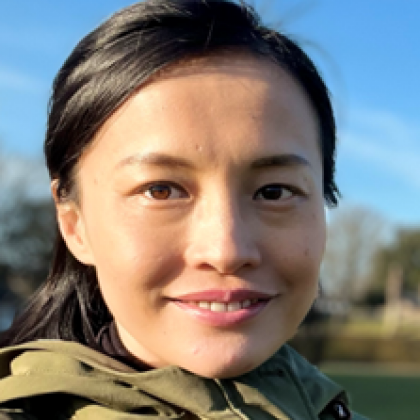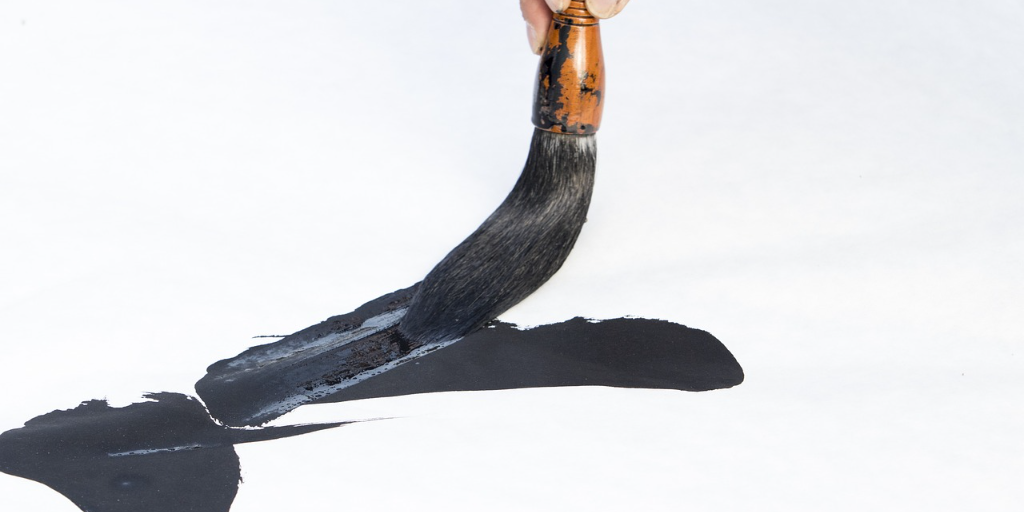Art therapy for Hongkongers
Opinion
Becoming an art therapist
Inspired deeply by the traditional Western approach to art therapy approach, I qualified as an art therapist in the UK in 2009. After a few years of post-qualification experience, I returned to Hong Kong and began developing a culturally sensitive practice.
I worked in the Hong Kong Cancer Fund Service Centre and supported adults with various kinds and stages of cancer. Many patients there had breast and gynaecological cancer and many were interested in creative activities.
After starting to offer art therapy workshops and groups, I became aware that some of the specific needs of these patients were not being met. Art therapy was not very common in Hong Kong at that time, and the non-directive approach I had been taught during my training, where I invited the patients to freely choose whatever they would like to make using the art materials, was experienced as ‘not knowing what to do’. Participants with less art experience found it intimidating not to have clear instructions from the art therapist on what to create within the sessions, and I noticed that they could not express themselves freely within this space. I began to think of themes and structures that might help the transition – to offer more direction to start with until they were comfortable enough to choose their own art-making activities.
Co-producing culturally sensitive art therapy
Although the literature related to brief and theme-based art therapy for cancer patients in Hong Kong was limited when I started out, art therapy has a long history in Western oncology which includes providing psychological support in hospitals through searching for meanings (Tjasink, 2010), pre-post-treatment (cancer) adjustment (Wiswell et al., 2019), and symptom management, including pain and fatigue, and end-of-life care in palliative and hospice wards (Waller, 2005). Cancer patients have different needs relating to age, gender, race, religion, and spirituality. Paying attention to these needs and grouping patients with others with similar experiences can help encourage a sense of security and safety in an art therapy group (Chan et al., 2006).
In order to develop a more culturally sensitive approach for women in Hong Kong undergoing cancer treatment, I started gathering feedback about their experiences of art therapy. I was very cautious about adjusting the model of art therapy I had been taught when training, so adopting a co-production approach was the key to ensuring that patients’ feedback was considered. While identifying themes for the art therapy group, the patients underwent a self-reflective process. They made meaning of their suffering, addressed personal needs, and articulated their feelings.
To successfully develop a culturally sensitive approach to art therapy, it was essential to combine any helpful theoretical frameworks and evidence developed in the West with the unique cultural context, religion and spirituality, traditions and philosophies, and family developmental theories as well as the experiences and insights of the people using the service. For this art therapy group in Hong Kong, having a structure using specific themes helped people explore their thoughts and feelings safely.
Hongkongers in the UK
Hongkongers in Britain recently published a report called A Part of Myself – Survey Report of Mental Health Amongst Hong Kong Arrivals in the UK, (2022) which outlines the health statuses of new arrivals from Hong Kong. Many Hongkongers experienced various mental health issues due to the political unsettlement in Hong Kong and found it challenging to explain their needs to healthcare professionals in the UK.
I spoke to the lead researcher of the report, Mark Liang, and we discussed the possibility of language barriers and cultural misunderstandings having a potential impact on Hongkongers.
The report also shows that:
- Hongkongers have low participation in the NHS health system even though they have paid the healthcare surcharge before they settle in the UK
- Most Hong Kong arrivals are unlikely to pursue mental health treatment over the following six months
- 45% have not met with a general practitioner (GP) at all
The report presented ideas and suggestions for supporting Hongkongers. It is anticipated that a maximum of 300,000 people will arrive in the UK in the next five years, and a clear strategy for helping Hong Kong arrivals is needed. It will be vital to support this community with culturally sensitive services and art therapy groups may be helpful in supporting transitioning and adjustment.
Hongkongers in Britain has recently been working with Get Fun Garden to promote using art to express thoughts and feelings about Hong Kong. The work culminated in an exhibition called ‘Colour Matters’ showcasing artworks created by Hongkongers in Brighton in early 2023.

The feedback from the patients within the Hong Kong Cancer Fund Service Centre may support the development of a better understanding of the cultural backgrounds of Hongkongers. Learning how to better support Hongkongers to build confidence and talk about their needs could increase participation in healthcare treatment. I hope that using a co-production approach to service development may encourage a patient-led environment that may increase Hongkongers’ sense of agency.
Call to develop culturally sensitive art therapy for Hongkongers
Art therapy is well suited to being tailor-made for clients with various needs and cultural backgrounds, which could significantly support people experiencing life-changing events. Born and bred in a mixed east-west culture and a unique sociology-political environment, I attended art therapy training in the UK, and brought it back to Hong Kong to discover many challenges. Working alongside Hongkongers to co-produce a culturally sensitive approach worked well to enable expression and articulation of thoughts and feelings.
Today, we know that thousands of Hongkongers are arriving in the UK and encountering various cultural barriers which, for some, leads to social, emotional, and mental health difficulties. I hope this article will act as a call to develop more culturally sensitive art therapy services for Hongkongers living in the UK.
You may also be interested in
Tristan has also published an article in the International Journal of Art Therapy: Brief, structured, group art therapy for women with breast and/or gynaecological cancer
References
Chan, C. L. W., Rainbow, T. H., Fu, W., & Chow, A. Y. M. (2006). Turning curses into blessings. Journal of Psychosocial Oncology, 24(4), 15–32. https://doi.org/10.1300/J077v24n04_02
Gerge, A., Pedersen, I. N., Gattino, G., & Wärja, M. (2020). The body in the mind – Assessing the phenomenal self through paintings created by gynaecological cancer survivors, The Arts in Psychotherapy, 71, 101691. https://doi.org/10.1016/j.aip.2020.101691
Liang, M., Mental Health Team, Hongkongers in Britain. (2022, May). A Part of Myself – Survey Report of Mental Health Amongst Hong Kong Arrivals in the UK. Hongkongers in Britain.
Pudrovska, T. (2010). Why is Cancer More Depressing for Men than Women among Older White Adults? Social Forces, 89(2), 535–558. https://doi.org/10.1353/sof.2010.0102
Tjasink M. Art psychotherapy in medical oncology: A search for meaning, International Journal of Art Therapy 2010; 15(2):75-83.
Waller, D. and Sibbett, C. (2005). Art therapy and cancer care. Maidenhead: Open University Press.


